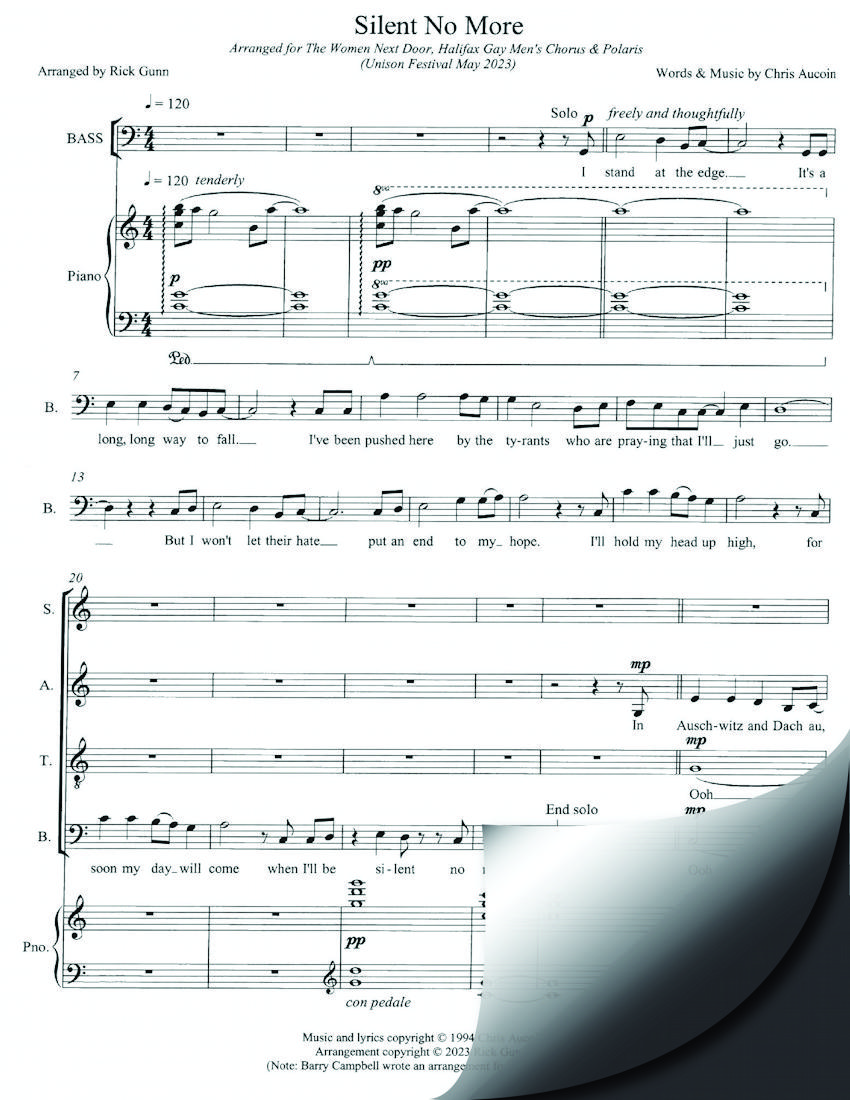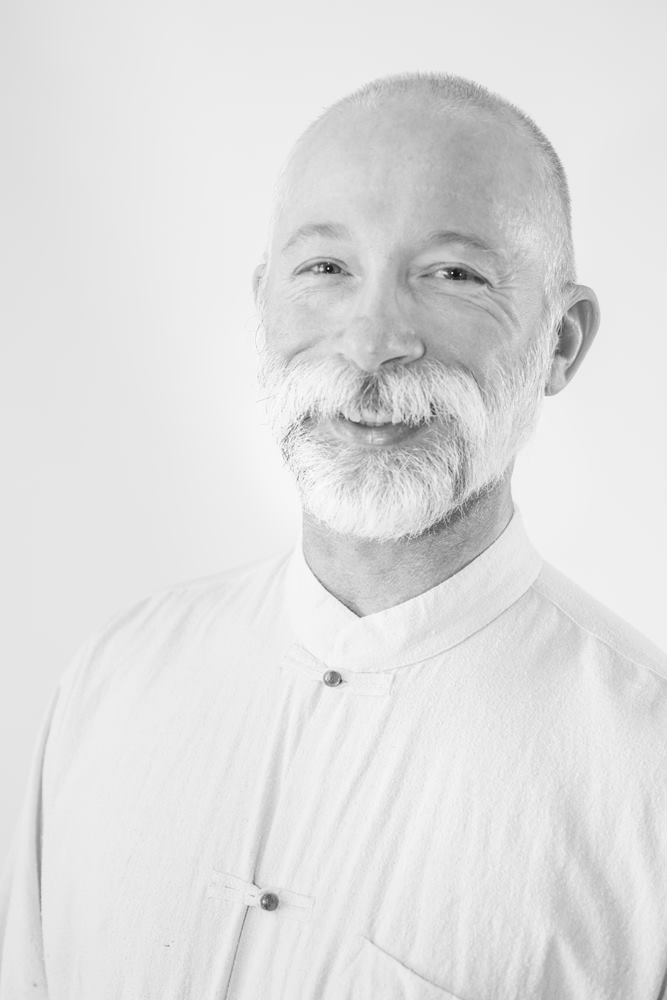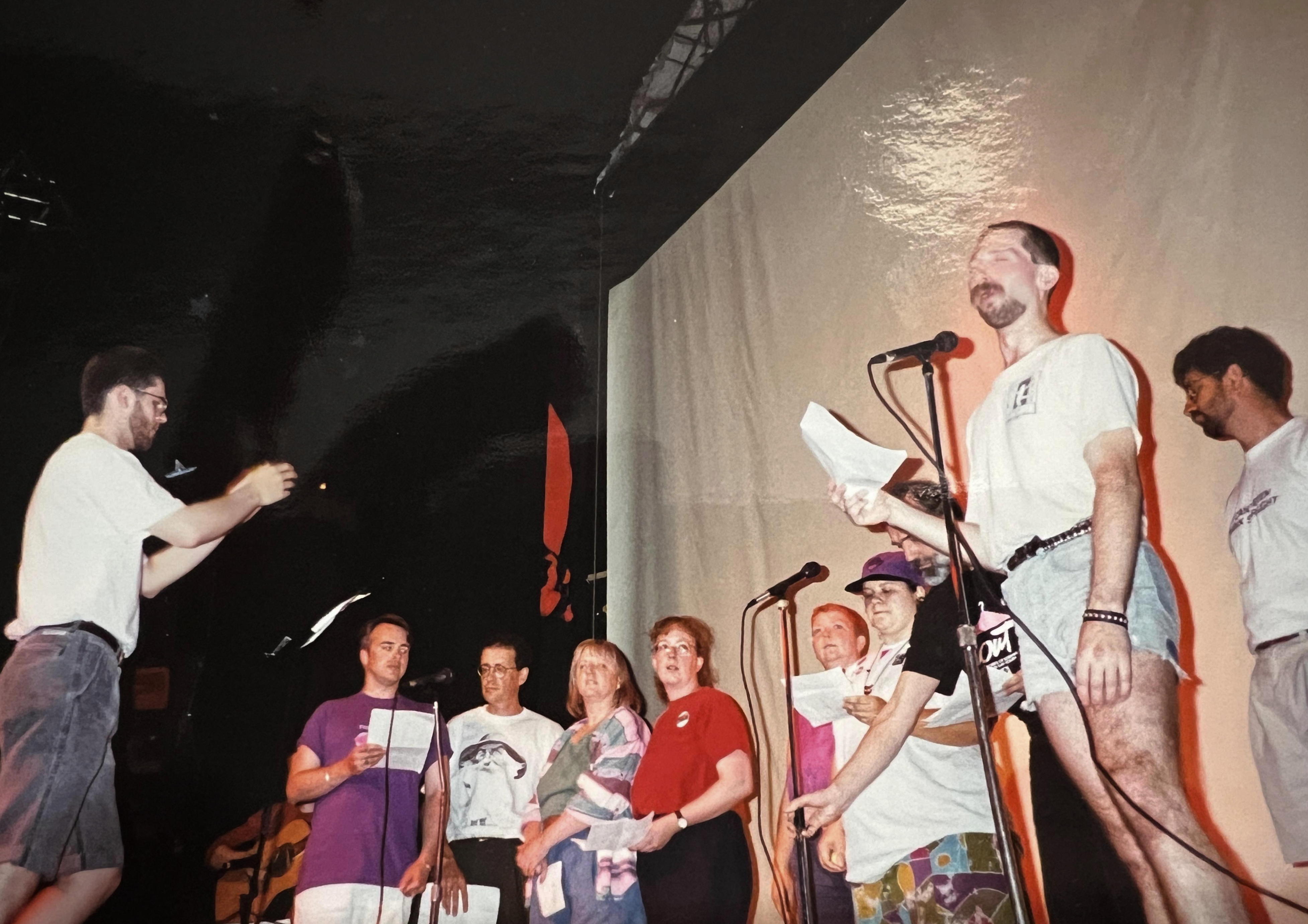
A good song is alive: it breathes, moves, changes, and adapts over time. A living song finds its voice and connects to the deep emotions that remind us of what it means to truly experience the beauties, joys, challenges and sorrows of life.
This is the story “Silent No More”, a song that sings through the darkness with a message of hope and a protest against injustice. The song will be performed at the upcoming Unison choirs festival with a new arrangement by Rick Gunn for over 100 voices.
“Silent No More” was originally written for a Pride event in 1994. The song has lived on in the voices of Halifax’s The Women Next Door (TWND) choir, who have performed it throughout the years for national and international audiences. This spring, a new arrangement of the song will be premiered by the Women Next Door choir, the Halifax Gay Men’s Chorus, and Polaris choir at Unison Festival 2023. The weekend-long choral festival featuring Canada’s 2SLGBTQIA+ choruses that will bring together about 22 choirs from all over Canada. Kim Vance-Mubanga, a member of host choir The Women Next Door, and board president of Unison Choruses Canada is “thrilled that the song’s writer, Chris Aucoin, is now a member of the Halifax Gay Men’s Chorus. TWND will be joining them to perform this piece with them at the opening concert of Unison Festival 2023 on Friday, May 19th!”
this song began its life as a poem
I was very fortunate to have an opportunity to find out more about the inspiration behind this song from the composer, Chris Aucoin. His conversational and informative retelling of this song’s creation transported me to the time the song was written and to moments in his life that inspired some of the lyrics.
Aucoin says “I didn’t set out to write a song.” Indeed, this song began its life as a poem written because he noticed that the 1994 Halifax Pride Festival “had nothing planned to mark that Pride was happening on the 25th anniversary of the Stonewall riots. The omission was ironic since marking the anniversary of those riots is how Prides began. As both an activist and a history buff I felt someone should do something.”

Aucoin says he kept coming back to the idea of finding a voice: “I was mulling over the importance of Stonewall, and the thought occurred to me that at least one thing that came out of those riots was the queer community finding its collective voice in a sustained way.”
Thinking about the community finding its voice reminded Aucoin of the experiences that led him to find his own voice. “That idea of finding a collective VOICE reminded me of a poem fragment I’d written a few months earlier – about when I was 17 and I came very close to ending my life – when I was silenced by the oppression that was all around me as a young queer person. The poem fragment refers to standing at the edge of a cliff on the outskirts of my home town and “it’s a long long way to fall”. Part of what got me through that dark night was a promise to myself that, one day, I would find a way to change things - find MY voice - so other queer kids wouldn’t find themselves on a literal or figurative cliff.”
In the years that followed, Aucoin followed through on his promise and found opportunities to help queer youth through his work with the Gay and Lesbian Association of Nova Scotia (GALA). Today he continues to advocate for issues that affect the queer community through his work with the AIDS Coalition of Nova Scotia.
Publisher's note: keep watch for an article about Chris' work at ACNS a few weeks from now.
Aucoin decided to develop his poem fragment into something bigger; “I decided to add a verse about Stonewall. Then it occurred to me that reading a poem in the post-parade show at the Rumours club wouldn’t likely be as well received as hearing a song. So I decided to set it to music and add a few more verses about some key touchstone moments of queer history.”
That is how the song came to be, but as any songwriter knows, writing a song is only the first step in the process of bringing it to life! With less than a week until the Pride event, Aucoin reached out to friends for help.

“I reached out to my friend Barry Campbell and asked if he’d write a 3-part arrangement for a mixed voice choir – and could he do it in 3 days! He said he’d try. While he was doing that I reached out to friends who were seriously into singing including members of The Women Next Door. We pulled together a group of 10 or so, got together on Wednesday evening to learn Barry’s arrangement, and then that Saturday we performed it at Rumours as part of a post-parade show.”
Though Aucoin says this will only be his second time performing the song, “Silent No More” has certainly had opportunities to breathe and grow throughout its life. Over the years, “Silent No More” has been sung many times as a regular part of The Women Next Door’s repertoire.
Rick Gunn, the arranger of the newest version of the song told me that he was inspired by the original score as well as The Women Next Door’s a capella singing of this song. When developing the new arrangement, Gunn tried to keep the essence and “heart” of the existing a cappella version within the new arrangement. Gunn describes it as a “protest song” but, he says, “It’s also a folk tale, not an ancient folk tale, but a living folk tale”. Staying true to the heart of the song doesn’t mean there are no changes. A folk tale changes and grows with each retelling, so with more voices and an excellent piano accompanist available, Gunn added some additional harmony. “I heard in it a sort of deep ‘heart’ which for me was an acoustic piano” supporting the voices as they help the song to grow from a single solo melody to a community of voices singing in harmony. The chords are simple and reminiscent of a folk song, but there are moments of dissonance that highlight the emotion of the story.
It’s also a folk tale, not an ancient folk tale, but a living folk tale
Though the heart of the song and the melody remain, Aucoin says that many things have changed: “Musically, Rick Gunn’s gorgeous arrangement is so different from that first very simple one written on 3 days notice! In working on his arrangement, Rick also asked me to revisit some of the lyrics.”
Both Aucoin and Gunn described to me the process of rewriting the lyrics to be more clear to people in 2023 who may not have lived through the same events as those who would have listened to this song in the 1990s. For example, Aucoin recalls “In 1994 I could write about AIDS without needing to name it – and people would still understand. We’re in a very different time in that regard now, so I revisited some language to make it a bit more explicit for an audience who did not have that same personal history.”
Nonetheless, Aucoin says that he “hopes that people see themselves reflected somewhere in the song – whether that’s surviving the darkness of coming close to ending one’s life (which is an all too common a queer experience), or the ongoing fight for human rights.”
this is not a song of history, this is a song of today.
Although this song was written about events in the past, I have the impression that everyone who has worked toward the upcoming performance truly believes that this song is just as alive and relevant today as it was in 1994. Both the composer and arranger mentioned that this song feels especially relevant today given the vitriol and accusations being stirred up toward trans people and drag artists. Also, as Aucoin points out, “the ongoing pushback against trans and non-binary visibility more broadly”. Gunn agrees, “this is not a song of history, this is a song of today.”
Aucoin says he hopes the song reminds members of the 2SLGBTQIA+ community of the value of “knowing queer history, how we’ve overcome a lot - but still have a long way to go.” He hopes that “if people hear a reference they don’t understand or know much about, they reach out to learn about that part of the queer story. Our history has too often been overlooked, destroyed, edited out....” He goes on to say, on a hopeful note, that this song is ultimately about finding a voice and “strength in community.”
As I learned about the history of “Silent No More”, it became very clear to me that this song has been lovingly crafted by queer musicians who are passionate about musically commemorating shared moments of sorrow, hope, history, and community. At the end of my interview, I asked Aucoin if there was anything else he would like to share about this song. He replied with these words of wisdom that are a testament to the value of standing up against hatred and sharing our stories through music and art: “For me, the song is both a celebration of survival and acknowledgment that not everyone survived. I think we owe it to those who are no longer here to remember both the struggles and victories… and I think we owe it to ourselves and those that follow us to keep up the good fight in whatever ways we can.”
You can hear “Silent No More” on Friday, May 19th at 7:30pm at the Halifax Convention Centre, and you can experience more choral music as part of the Unison Festival taking place at the Halifax Convention Centre from May 19-22. Festival information and tickets are available on the festival website at unisonfestivalUnisson.ca.
Fiona M. Ryan (she/her) is a composer, performer, music instructor, and writer based in Halifax (Kjipuktuk), Nova Scotia. Fiona studied music composition and performance and her research centres around multidisciplinary collaboration and the intersection of music, culture, and gender. Fiona’s current creative projects include composing music for choir and working collaboratively to create a new opera. Fiona lives in a quaint apartment in Halifax with her talented wife and fabulous cat.

